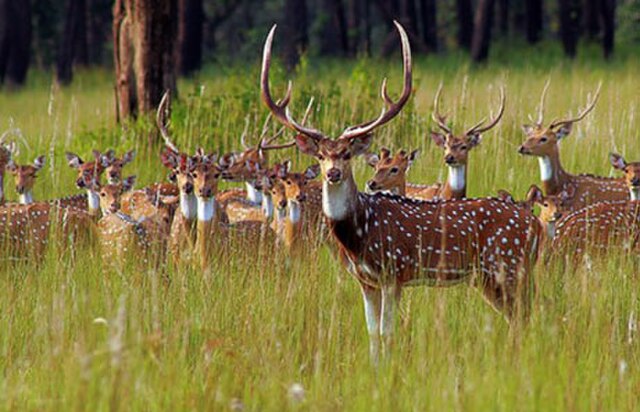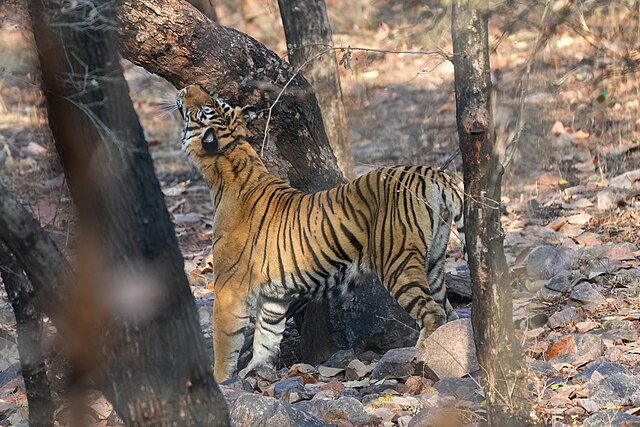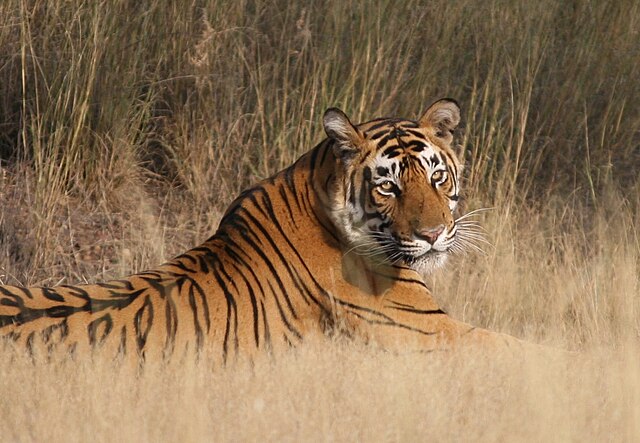Have you ever dreamed of witnessing a Royal Bengal tiger in its natural habitat? Ranthambore National Park in Rajasthan, India, offers one of the world’s best opportunities to experience this magnificent predator up close. This comprehensive guide will transform you from a curious traveler into a well-prepared wildlife enthusiast ready to explore one of India’s most celebrated national parks.
What Makes Ranthambore National Park Special?
Ranthambore isn’t just another wildlife sanctuary – it’s a living testament to India’s conservation success story. Spanning over 1,334 square kilometers, this former royal hunting ground has evolved into one of the country’s most important tiger reserves. But what truly sets Ranthambore apart from other national parks?
The Royal Bengal Tigers of Ranthambore
The park’s crown jewel is undoubtedly its tiger population. With approximately 75-80 tigers roaming freely across its diverse landscape, Ranthambore boasts one of India’s highest tiger densities. These aren’t just any tigers – they’re the famous Royal Bengal tigers, known for their distinctive orange coat with black stripes and impressive size.
What makes tiger spotting here exceptional is their relatively comfortable behavior around safari vehicles. Unlike tigers in other reserves who remain elusive, Ranthambore’s tigers often display natural behaviors – hunting, playing, and interacting – providing visitors with unforgettable photographic opportunities.
The park has produced several celebrity tigers over the years. Machli, known as the “Queen Mother of Tigers,” became a global icon before her passing in 2016. Her legacy continues through her descendants, who still roam the park’s territories today.
Rich Historical Heritage
Imagine combining wildlife viewing with a journey through time. Ranthambore seamlessly blends natural beauty with historical significance. The ancient Ranthambore Fort, perched atop a hill within the park, dates back to the 10th century and holds UNESCO World Heritage status.
This unique combination means your safari might include spotting a tiger near ancient ruins or watching peacocks dance in front of centuries-old temples. It’s like having a time machine and wildlife documentary rolled into one experience.
Planning Your Visit to Ranthambore
Success in wildlife viewing often depends on timing and preparation. Let me guide you through the essential planning aspects that can make or break your Ranthambore experience.
Best Time to Visit Ranthambore National Park
Timing your visit correctly can dramatically increase your chances of tiger sightings and ensure comfortable weather conditions.
Peak Season: October to March
This period represents the golden window for Ranthambore visits. The weather remains pleasant with daytime temperatures ranging from 20-25°C, making safari experiences comfortable. Wildlife activity peaks during these months as animals frequently visit water sources.
October through December offers the perfect balance – comfortable temperatures, clear skies, and active wildlife. January and February bring cooler weather, which tigers particularly enjoy, often leading to increased sightings during midday safaris.
March marks the beginning of summer but remains manageable. This month often provides excellent photography opportunities as the landscape transforms, creating dramatic backdrops for wildlife shots.
Monsoon Season: July to September
While the park remains closed during peak monsoon months (July-September), early October visits can be magical. The landscape becomes lush and green, water bodies fill up, and the air feels fresh and clean.
However, monsoon season viewing requires patience as thick vegetation can obstruct sightings, and tigers tend to be less active during humid conditions.
How to Reach Ranthambore National Park

Accessibility plays a crucial role in planning your wildlife adventure. Fortunately, Ranthambore connects well with major Indian cities through multiple transportation options.
By Air
The nearest airport is Jaipur International Airport, located approximately 160 kilometers from Ranthambore. This journey takes about 3-4 hours by road, depending on traffic conditions.
Many visitors prefer flying into Delhi (350 kilometers away) due to better international connectivity, then taking a train or driving to Sawai Madhopur, the gateway town to Ranthambore.
By Train
Sawai Madhopur Railway Station serves as the primary rail connection to Ranthambore National Park. Located just 11 kilometers from the park entrance, this station connects to major Indian cities including Delhi, Mumbai, Jaipur, and Kota.
The Golden Temple Mail and Ranthambore Express are popular train options from Delhi, offering comfortable overnight journeys that arrive in Sawai Madhopur early morning – perfect timing for morning safaris.
By Road
Road connectivity to Ranthambore is excellent, with well-maintained highways connecting to major cities. The drive from Jaipur takes approximately 3-4 hours, while Delhi requires 6-7 hours of driving time.
Many travelers enjoy the road journey as it passes through quintessential Rajasthani landscapes, traditional villages, and historical sites, making the journey part of the adventure.
Safari Zones and Booking Guide
Understanding Ranthambore’s zone system and booking process can significantly impact your wildlife viewing success. Let me demystify this crucial aspect of your visit.
Understanding Ranthambore’s 10 Safari Zones
Ranthambore divides into 10 distinct zones, each offering unique landscapes, wildlife populations, and viewing opportunities. Think of these zones as different chapters in a wildlife story – each with its own characters and plot.
Zones 1-5 constitute the core areas, historically offering the highest tiger sighting probabilities. Zone 3 and Zone 4 are particularly famous for tiger encounters, while Zone 1 provides excellent photographic opportunities near lakes and ancient ruins.
Zones 6-10 represent buffer areas, often less crowded but equally rewarding. These zones showcase diverse ecosystems and offer chances to spot other wildlife species like leopards, sloth bears, and various bird species.
Each zone features different terrain – from dense forests and grasslands to rocky outcrops and water bodies. This diversity means every safari offers a unique experience, encouraging multiple visits to fully appreciate Ranthambore’s richness.
Online Booking Process Made Simple
Safari booking at Ranthambore requires advance planning due to limited daily permits and high demand. The process might seem complex initially, but following the right steps ensures smooth reservations.
Government Website Booking
The official Rajasthan Forest Department website (rtf.rajasthan.gov.in) handles all government quota bookings. Bookings open 30 days in advance and often sell out within hours for peak season dates.
The process requires creating an account, selecting dates and zones, and making immediate online payments. Foreign nationals face additional documentation requirements, including passport uploads and higher fees.
Pro tip: Be online exactly at booking opening time (10 AM) with all documents ready and multiple zone preferences selected to increase booking chances.
Private Tour Operators
Licensed tour operators maintain separate quotas and can often secure bookings when government quotas are full. While more expensive, this option provides convenience and often includes additional services like transportation and guides.
Reputable operators also offer package deals combining accommodation, meals, and multiple safaris, which can provide better overall value and hassle-free experiences.
Wildlife Photography Tips at Ranthambore
Ranthambore offers exceptional wildlife photography opportunities, but capturing that perfect tiger shot requires preparation, patience, and proper technique.
Essential Camera Equipment
Wildlife photography at Ranthambore demands specific equipment considerations. A telephoto lens (300mm minimum, preferably 400-600mm) is essential for capturing detailed shots while maintaining safe distances from wildlife.
Camera bodies with good low-light performance prove invaluable during early morning and late evening safaris when lighting conditions are challenging but wildlife activity peaks. Fast autofocus systems help capture sharp images of moving animals.
Don’t forget extra batteries and memory cards – cold morning temperatures drain batteries quickly, and you’ll likely take hundreds of shots during each safari. A sturdy tripod or monopod can help with stability during longer focal length shooting.
Best Photography Spots in Each Zone

Each zone offers unique photographic opportunities. Zone 3’s Padam Talao lake provides stunning reflection shots with tigers drinking water, while Zone 4’s Rajbagh Talao offers dramatic landscape compositions with ruins in the background.
Zone 1’s Malik Talao frequently features tigers lounging near water, creating intimate portrait opportunities. The key is understanding each zone’s terrain and water sources, as tigers regularly visit these locations.
Golden hour lighting (first and last hour of safaris) produces the most dramatic photographs. Plan your shots during these times, and don’t just focus on tigers – Ranthambore’s diverse wildlife and landscapes offer countless photographic subjects.
Accommodation Options Near Ranthambore
Choosing the right accommodation can enhance your overall Ranthambore experience, providing comfort after exciting safari days and convenient access to park entrances.
Luxury Resorts and Hotels
Sawai Madhopur and surrounding areas offer several luxury options that combine comfort with wildlife themes. The Oberoi Vanyavilas provides ultra-luxury tented accommodation with personalized service and elegant décor inspired by royal hunting expeditions.
Aman-i-Khas offers exclusive glamping experiences with spacious tents featuring modern amenities while maintaining connection with nature. These properties often include naturalist guides, spa services, and gourmet dining options.
Tree House Resort Ranthambore provides unique elevated accommodations that literally put you closer to nature while offering modern comforts and excellent views of surrounding forests.
Budget-Friendly Stays
Budget travelers need not compromise on comfort or location. Several well-maintained guesthouses and hotels in Sawai Madhopur offer clean accommodations, local cuisine, and easy park access at reasonable prices.
Ranthambore Regency and Hotel Tiger Safari Resort provide comfortable rooms with basic amenities, helpful staff familiar with safari bookings, and authentic Rajasthani hospitality without breaking the budget.
Many budget properties offer package deals including accommodation, meals, and safari bookings, providing excellent value for money and eliminating booking hassles.
Local Culture and Nearby Attractions
Ranthambore’s appeal extends beyond wildlife, offering rich cultural experiences and historical attractions that provide deeper insights into Rajasthani heritage.
Ranthambore Fort: A UNESCO World Heritage Site
The ancient Ranthambore Fort stands as a magnificent example of Rajput architecture and strategic military planning. Built in the 10th century, this fort witnessed numerous battles and served as a refuge for various rulers throughout history.
Exploring the fort reveals ancient temples, royal palaces, and panoramic views of the surrounding national park. The fort’s integration within the park creates unique opportunities to combine historical exploration with wildlife viewing.
Several Ganesha temples within the fort complex remain active pilgrimage sites, adding spiritual dimensions to your visit. The annual Ganesha festival attracts thousands of devotees, showcasing local religious traditions and cultural practices.
Traditional Rajasthani Villages
Surrounding villages offer authentic glimpses into rural Rajasthani life. Local communities maintain traditional occupations like pottery, weaving, and farming while adapting to tourism opportunities.
Village visits provide cultural exchanges where you can learn about local customs, traditional crafts, and conservation efforts. Many villagers work as naturalists, trackers, and guides, bringing invaluable local knowledge to wildlife experiences.
These interactions highlight the important relationship between local communities and conservation efforts, demonstrating how tourism can support both wildlife protection and rural livelihoods.
Conservation Efforts and Responsible Tourism
Ranthambore’s success story didn’t happen overnight – it represents decades of dedicated conservation efforts, community involvement, and responsible tourism practices.
The park’s transformation from a royal hunting ground to a thriving tiger reserve showcases India’s commitment to wildlife conservation. Project Tiger, launched in 1973, identified Ranthambore as one of the first tiger reserves, providing crucial protection and management resources.
Current conservation efforts focus on habitat restoration, anti-poaching measures, and human-wildlife conflict mitigation. Camera traps monitor tiger populations, while research programs study behavior patterns and habitat requirements.
Responsible tourism plays a vital role in conservation funding and community support. Your visit directly contributes to park maintenance, staff salaries, and local economic development. Following park rules, maintaining respectful distances from wildlife, and supporting local businesses helps ensure Ranthambore’s continued success.
Community involvement remains crucial for long-term conservation success. Local communities work as guides, drivers, and hospitality providers while participating in conservation awareness programs. This partnership model demonstrates how conservation and economic development can coexist successfully.
Conclusion
Ranthambore National Park offers an unparalleled wildlife experience that combines thrilling tiger encounters with rich cultural heritage and stunning natural beauty. From the moment you enter its gates until your final safari, every aspect of Ranthambore tells a story of successful conservation, royal history, and the magnificent Royal Bengal tiger.
Planning your visit requires attention to timing, booking procedures, and preparation, but the rewards far exceed the effort invested. Whether you’re a wildlife photographer seeking that perfect shot, a nature enthusiast eager to witness apex predators, or a traveler looking for unique cultural experiences, Ranthambore delivers memories that last a lifetime.
The park’s success in tiger conservation provides hope for wildlife protection globally while demonstrating how responsible tourism can support both conservation goals and local communities. Your visit becomes part of this ongoing success story, contributing to the protection of one of the world’s most magnificent predators.
Remember, Ranthambore isn’t just about tiger sightings – it’s about connecting with nature, understanding conservation challenges, and appreciating the delicate balance between human development and wildlife protection. Every safari offers new discoveries, whether spotting a tiger, observing bird species, or simply enjoying the peaceful beauty of pristine wilderness.
Frequently Asked Questions
1. What are the chances of spotting tigers during a Ranthambore safari?
Tiger sighting chances at Ranthambore are approximately 60-70% during peak season (October-March), making it one of India’s best tiger viewing destinations. However, success depends on factors like weather conditions, zone selection, and timing. Multiple safaris increase your chances significantly, which is why most visitors book 2-3 safari drives during their stay.
2. How far in advance should I book Ranthambore safari tickets?
Government quota bookings open exactly 30 days in advance and often sell out within hours during peak season. For the best chances, be online at 10 AM IST when bookings open, with all documents ready and multiple zone preferences selected. Private tour operators may have availability even when government quotas are full, though at higher prices.
3. Which safari zones offer the best tiger sighting opportunities?
Zones 1-5 (core areas) historically provide higher tiger sighting probabilities, with Zones 3 and 4 being particularly famous for encounters. However, tigers move freely throughout the park, and buffer zones (6-10) often provide equally rewarding experiences with fewer crowds. Each zone offers unique landscapes and wildlife viewing opportunities.
4. What should I pack for a Ranthambore safari?
Essential items include warm layers for early morning safaris, comfortable closed-toe shoes, sun protection (hat, sunglasses, sunscreen), camera equipment with telephoto lens, extra batteries, water bottles, and binoculars. Avoid bright colored clothing that might disturb wildlife, and bring a small backpack for carrying essentials during the 3-hour safari drives.
5. Can I visit Ranthambore National Park with children?
Yes, Ranthambore welcomes families with children, and safari experiences can be educational and exciting for kids. However, children must remain quiet during safaris to avoid disturbing wildlife, and parents should prepare them for early morning departures and 3-hour vehicle rides. Many young visitors find the experience inspiring and develop lasting interests in wildlife conservation.

